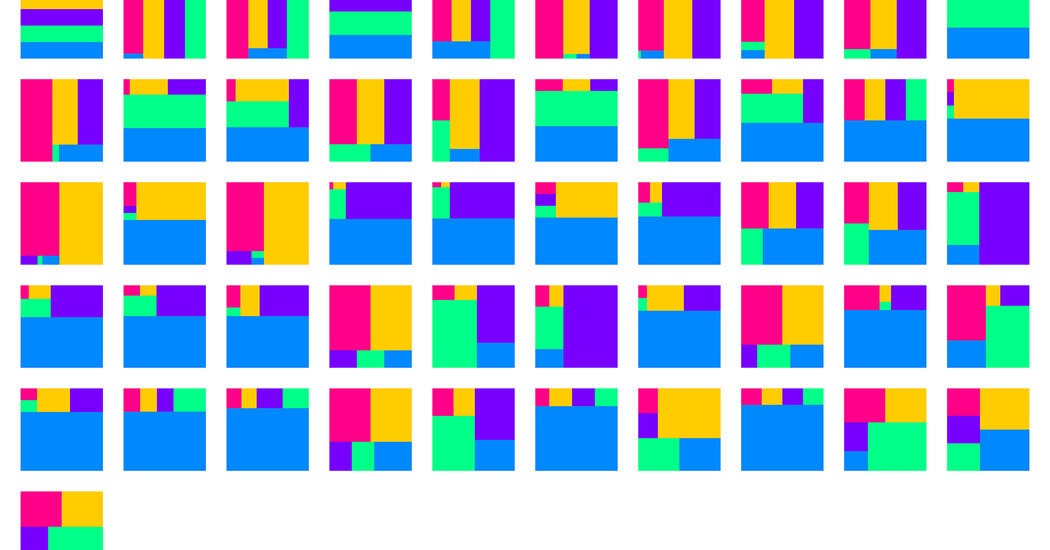Have you ever wondered how many ways you can divide a square into similar rectangles? It turns out the answer is more complex than you might think! In this blog post, we’ll explore the fascinating journey of a group of mathematicians and computer scientists who recently solved this geometric puzzle.
It all started when John Carlos Baez posted a challenge on Mathstodon, a social network for mathematicians. He asked if anyone knew the three ways to divide a square into three rectangles with the same proportions. This simple question soon blossomed into a full-fledged investigation, involving mathematicians, computer scientists, and even a Ph.D. student.
The investigation revealed that there are 11 ways to divide a square into four similarly proportioned rectangles. And it didn’t stop there! With the help of computer software, the group found 51 solutions when it came to dividing a square into five similar rectangles, 245 options for six similar rectangles, and a whopping 8,506 possible aspect ratios for eight rectangles.
But this wasn’t just a numbers game. In the course of their exploration, the group uncovered a connection between the puzzle and more serious mathematics. The ratio of the long sides to the short sides turned out to be “algebraic numbers”, a major topic in number theory.
The exploration also revealed a connection to electrical circuit theory. It turns out you can think of the height and width of each rectangle as related to voltage and current in an electrical circuit. This connection led to a discussion of “guillotine partition” and “Mondrian”, terms used to describe the process of recursively slicing off rectangular pieces from a square.
The journey of this investigation is an inspiring example of how collaboration and curiosity can lead to unexpected discoveries. So, if you’re looking for a fascinating and visual way to explore mathematics, this geometric puzzle is a great place to start!
Source: www.nytimes.com
